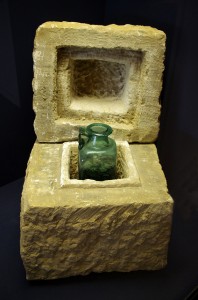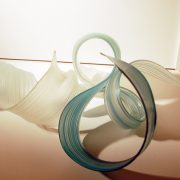Glass was an ancient status symbol
She bases the hypothesis on the examples of early glasses, most of which were opaque or heavily colored. They often resembled semi-precious and precious materials like lapis lazuli and carnelian, which were used extensively by the wealthiest and most powerful people in society. Early examples of glass were almost exclusively used in decorative applications, and as containers for perfumes and oils that would not have been available to ordinary citizens.
Duckworth looked at the evolution of glass blowing and determined that it was a response to societal needs rather than a driver. She believes that glass may have originally been envisioned as a way to fill a social need, and did not morph into a useful material that was available to the masses until much later in the material’s history. She points to modern uses for glass, including fiber optic cables and precision lenses, and says that early developers of the material did not see the practical uses of glass, even for more mundane applications like windows and practical storage containers.
Today, we tend to look beyond the decorative capacity of glass and focus on its most practical applications. In reality, glass can be both practical and decorative. One characteristic of glass is its impervious surface. On one hand, it allows light to flow freely through it. On the other hand, opacity is sometimes preferred.
Glassprimer™ glass paint is a specialized glass coating that bonds permanently to glass surfaces. GlassPrimer also makes a glass surface molecular activator that is designed to work with UV-inkjet glass printing processes. For more information about Glassprimer™ glass paint, please visit the rest of our site. If you’d like to purchase Glassprimer™ glass paint, please visit our online store
Photo Credit: Daniel Jolivet, via Flickr.com



